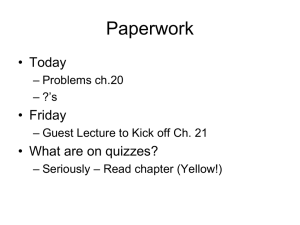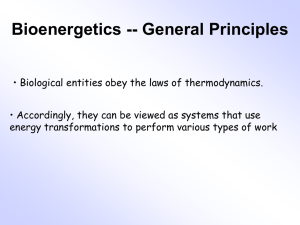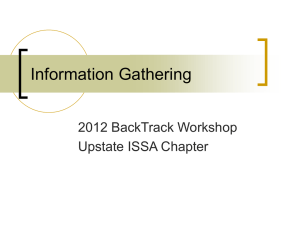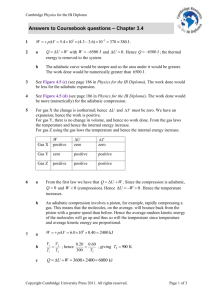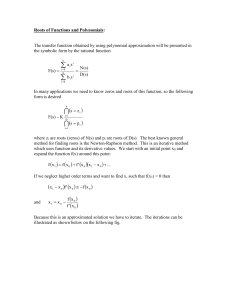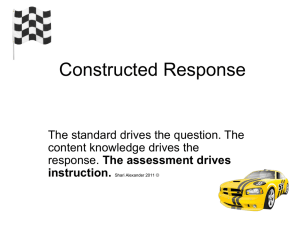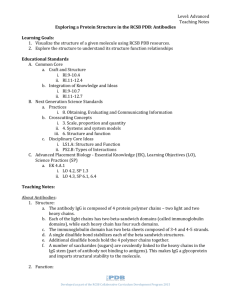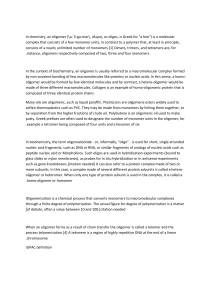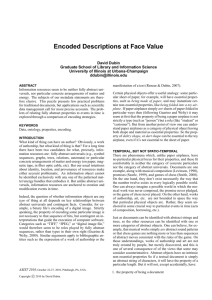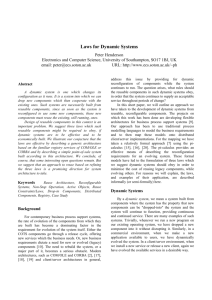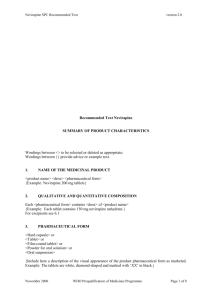Teaching-Notes-HIV-RT-viz
advertisement
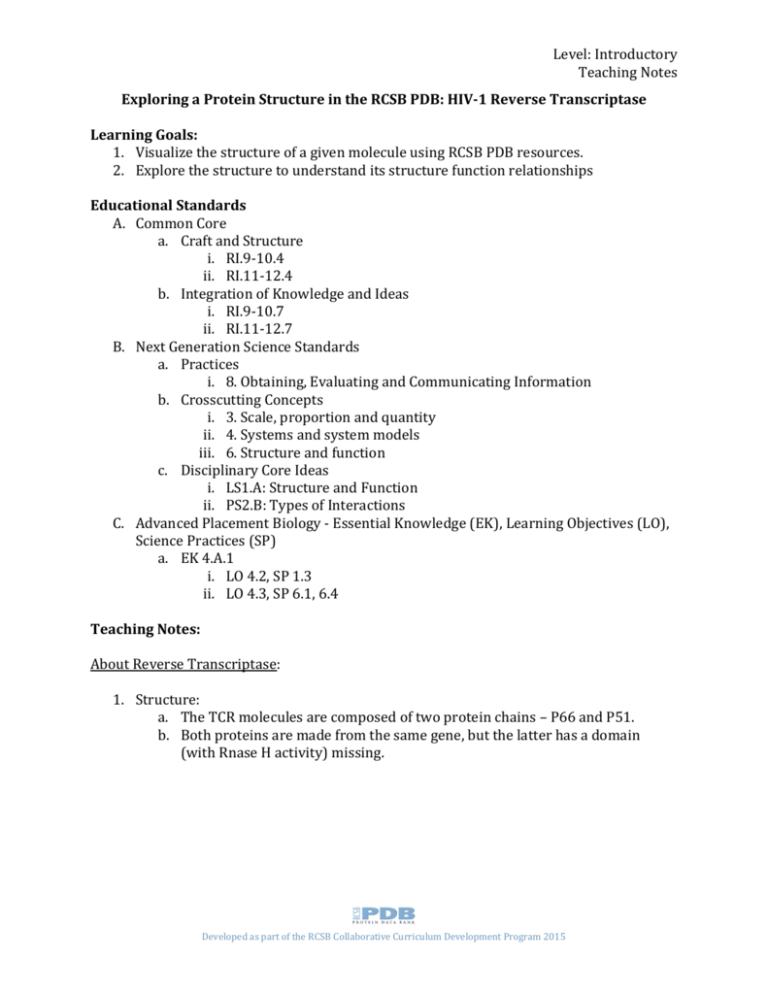
Level: Introductory Teaching Notes Exploring a Protein Structure in the RCSB PDB: HIV-1 Reverse Transcriptase Learning Goals: 1. Visualize the structure of a given molecule using RCSB PDB resources. 2. Explore the structure to understand its structure function relationships Educational Standards A. Common Core a. Craft and Structure i. RI.9-10.4 ii. RI.11-12.4 b. Integration of Knowledge and Ideas i. RI.9-10.7 ii. RI.11-12.7 B. Next Generation Science Standards a. Practices i. 8. Obtaining, Evaluating and Communicating Information b. Crosscutting Concepts i. 3. Scale, proportion and quantity ii. 4. Systems and system models iii. 6. Structure and function c. Disciplinary Core Ideas i. LS1.A: Structure and Function ii. PS2.B: Types of Interactions C. Advanced Placement Biology - Essential Knowledge (EK), Learning Objectives (LO), Science Practices (SP) a. EK 4.A.1 i. LO 4.2, SP 1.3 ii. LO 4.3, SP 6.1, 6.4 Teaching Notes: About Reverse Transcriptase: 1. Structure: a. The TCR molecules are composed of two protein chains – P66 and P51. b. Both proteins are made from the same gene, but the latter has a domain (with Rnase H activity) missing. Developed as part of the RCSB Collaborative Curriculum Development Program 2015 Level: Introductory Teaching Notes Polymerase p66 RNAse H p51 HIV-1 Reverse Transcriptase, PDB ID 1dlo, 2hmi 2. Function: a. The RT enzyme has 2 active sites (in P66) – polymerase and RNase H. b. The polymerase active site can work with both RNA and DNA templates, while the RNase H domain functions to cleave RNA strands in an RNA-DNA duplex. Polymerase p66 DNA RNAse H p51 PDB ID 2hmi Developed as part of the RCSB Collaborative Curriculum Development Program 2015 Level: Introductory Teaching Notes Answers to Questions in Exercise: Q1. What protein and non-protein components does this structure contain? A1. The structure includes the HIV RT P66 and P51 chains. In addition there is a small molecule drug, Nevirapine, bound to the HIV RT structure. Q2. Name the authors who solved the structure of this protein? A2. Smerdon, S.J., Jager, J., Wang, J., Kohlstaedt, L.A., Chirino, A.J., Friedman, J.M., Rice, P.A., Steitz, T.A. Q3. Can you identify all the protein and non-protein components you listed above? Describe their relationship to each other. A3. The P66 and P51 chains interact with each other. The Nevirapine is bound to the P66 chain, at the back of the polymerase active site. Q4. What protein and non-protein components does this structure (PDB ID 2hmi) contain? A4. The structure includes the P66 and P51 RT proteins. In addition there are 2 strands of DNA, and heavy and light chains making the Fab region that binds to the P51 chain. Q5. Compare what you see (PDB ID 2hmi) to the structure seen for PDB entry 3hvt – note at least two points about how these structures are similar and two points about how they are different. A5. Similarities: 1. Both the structures include the P66 and P51 chains of HIV-1 RT. 2. Both are crystal structures. 3. Both structures include both the polymerase and RNase domains. Differences: 1. The 2hmi structure includes DNA in the complex, while the 3hvt structure only has the RT protein chains. 2. The 2hmi structure includes a Fab region (heavy and light chains) while the 3hvt structure does not. 3. The 2hmi structure has no drug or inhibitor molecules bound to it while the 3hvt structure has a drug, Nevirapine, bound to it. Developed as part of the RCSB Collaborative Curriculum Development Program 2015

